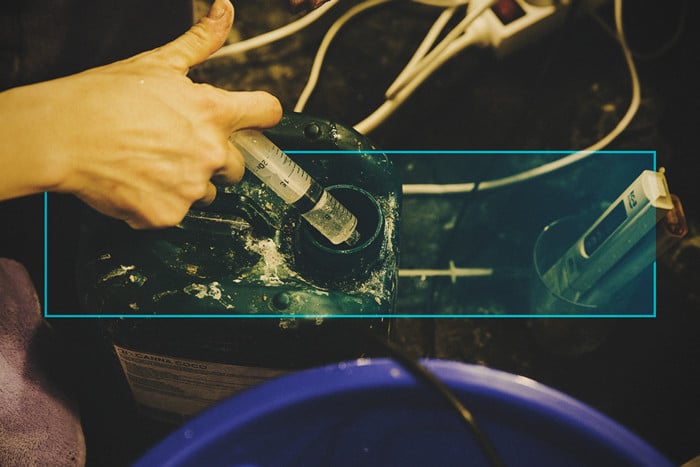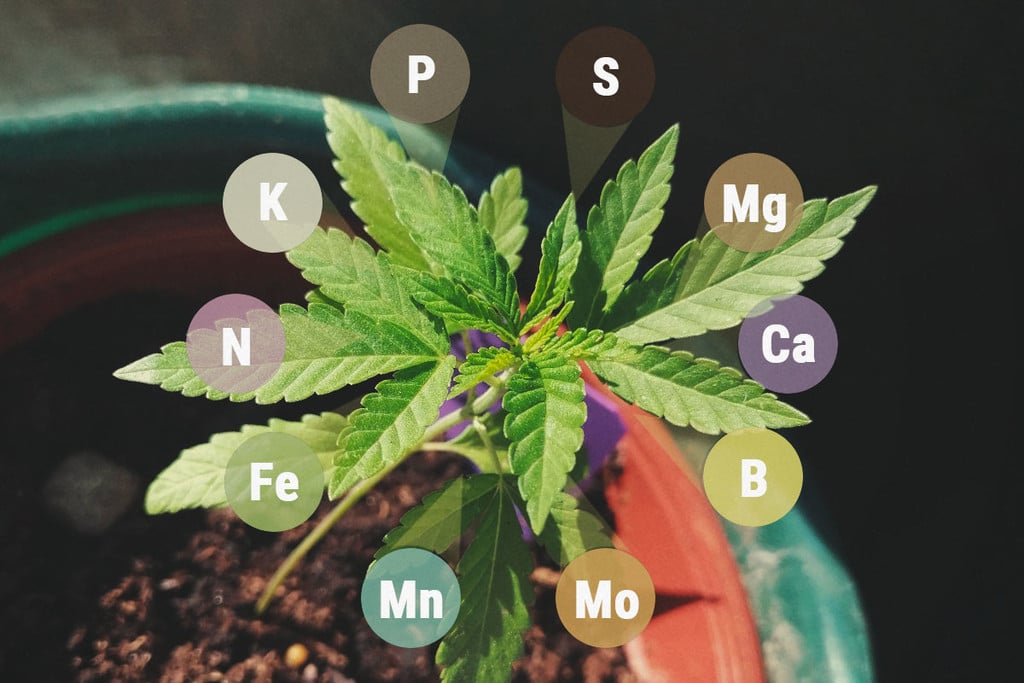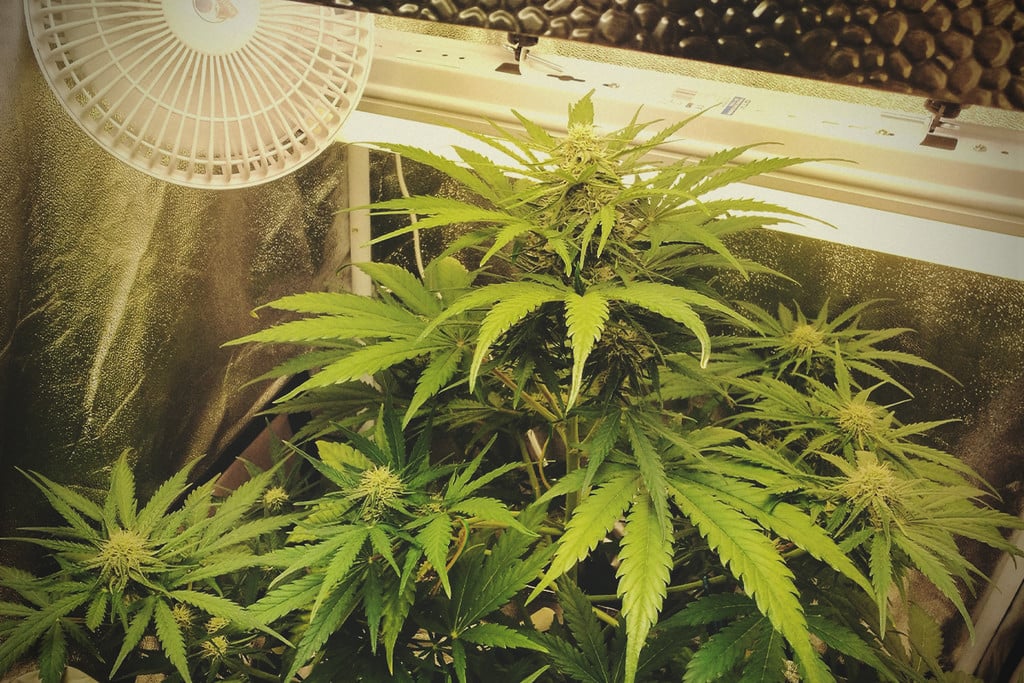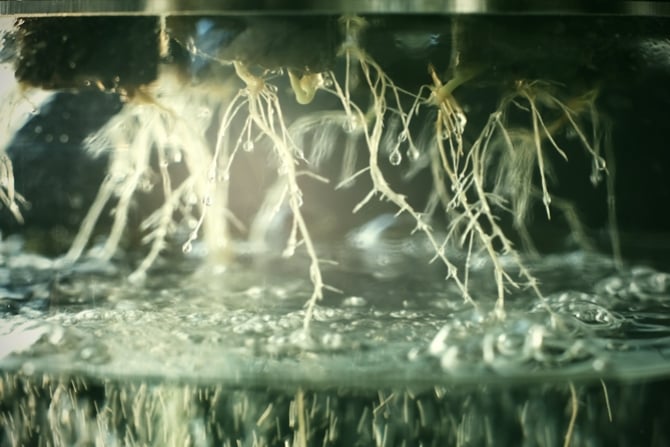.
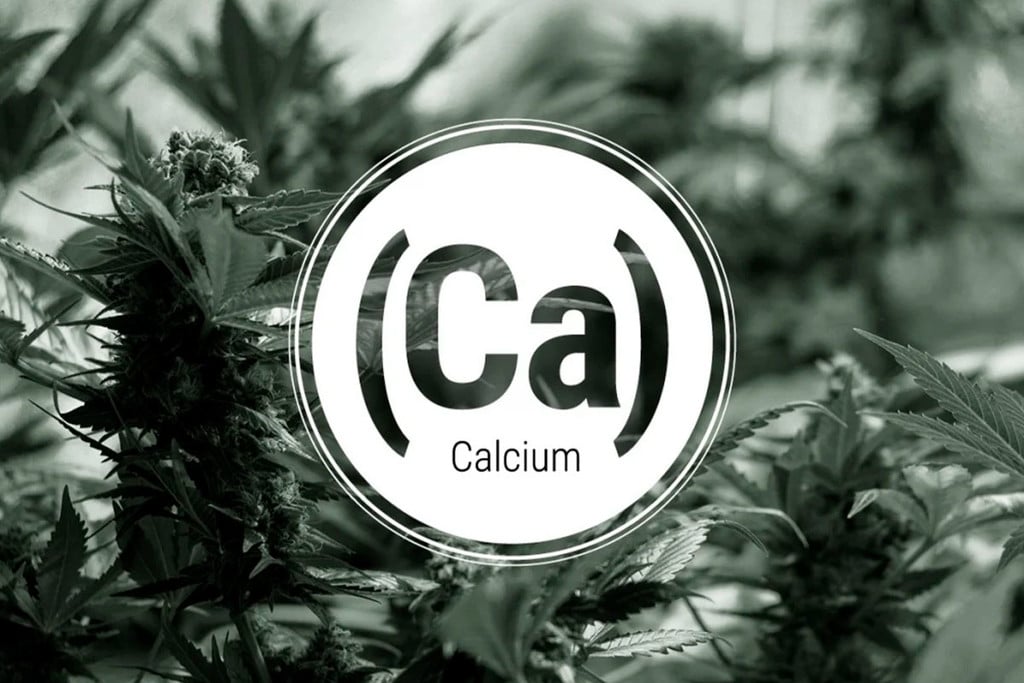
Calcium Deficiency In Cannabis Plants
Cannabis relies on the complex interaction of many compounds to ensure healthy growth. Calcium deficiency can slow vegetative and reproductive growth. Identifying and correcting issues like this is all part of becoming a master grower.
Contents:
How to Identify Calcium Deficiencies in Your Cannabis Plants
Calcium is an essential compound used to aid plant growth all throughout its life. It is necessary for proper germination and early root development, right on through to flowering and healthy maturation. Calcium helps ensure cell vitality and strong plant formation. It also helps maintain healthy root growth, protein and vitamin synthesis and the proper absorption of potassium.
Calcium is necessary for transpiration and nutrient uptake. It is a requisite for photosynthesis and helps plants resist heat stress. It guarantees the healthy functioning of hair roots and leaf stomata. Calcium is semi-fixed. It remains in the cell walls until there is extreme deficiency, in which case it becomes soluble again. This can be observed when leaves in the middle of the plant and older growth begin to be affected.
A calcium deficiency in cannabis plants is less common in outdoor soil grows than hydroponic or neutral-medium indoor grows. A calcium deficiency will:
- Inhibit nutrient uptake at the roots. Calcium aids in the decomposition of organic matter at the root zone, facilitating nutrient absorption.
- Impede flower growth during peak florescence. Cannabis uses extra calcium in the middle of the flowering process. Depending on species, this can be from three to six weeks into flowering.
- Cause nutrient lockout. Poor functioning roots means poor nutrient uptake. The plant may display several types of nutrient problems when this happens.
- Cause plants to lose vitality and wilt. Calcium is essential for general plant health and stress resistance.
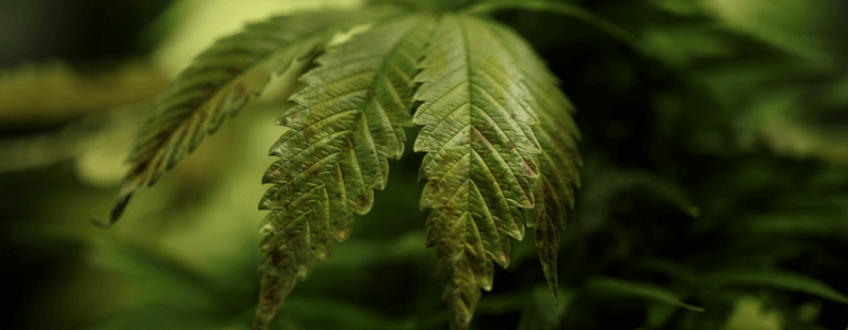
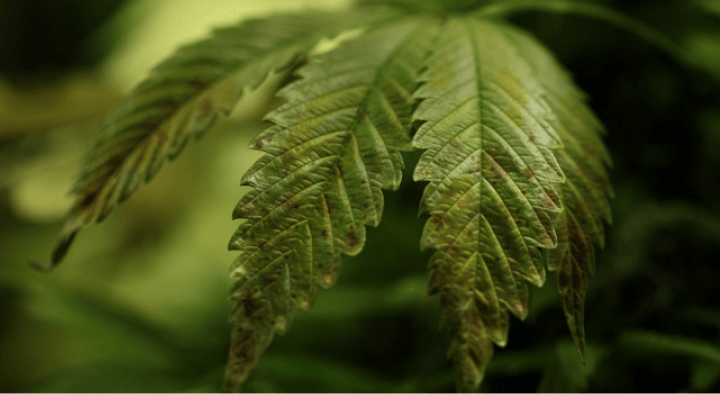
Calcium Deficiency Symptoms
Calcium acts in concert with other important compounds to ensure overall plant health and vitality. A lack of calcium can mimic other deficiencies since the plant's ability to maintain essential biological functions is compromised.
The following represent symptoms of a calcium deficiency:
- New growth at the top of the plant is primarily affected.
- Young growth slows, new leaves curl. Fresh growth is twisted and dies off quickly. Young shoots are purple or yellow.
- The root system is compromised so fewer nutrients will be absorbed. Overall growth slows and plants lose their lustre.
- Flower growth severely affected, especially at peak florescence. Young calyces are crinkled, distorted and don't fill out.
- Large, light brown necrotic spots form on leaves. Leaf edges mottle and turn brown. Leaves become yellow as the problem advances.
- Branches are weak and break easily. Stalks may become hollow and rot inside.
- Plants do not respond well to heat.
- Roots become brown and are susceptible to slimy root rot and other pathogens.
Calcium & Outdoor Growing
Growing outdoors in soil generally allows for a greater margin of error with many nutrient problems. Unmodified acidic soils like those found in pinewoods can leach calcium, but proper attention can prevent calcium issues. Modify the soil with garden lime, dolomite, powdered bones, crushed eggshells or fish meal. Good quality compost is always a must.
There is little chance of a calcium deficiency growing outdoors in pots or growbags. Contemporary soil mixes usually have a complete spectrum of vital nutrients for the life of the plant. Organic growers will have no-till winter companion plants rehabilitating the soil for the new season.
Tomatoes are another plant notorious for their calcium demands. An old gardener’s trick is to dig a hole deeper than what is needed for the transplant. Put two fish heads and a palmful of garden lime in the bottom and water in. Backfill with soil, then plant the seedling as normal. Your plants will boom, then bloom.
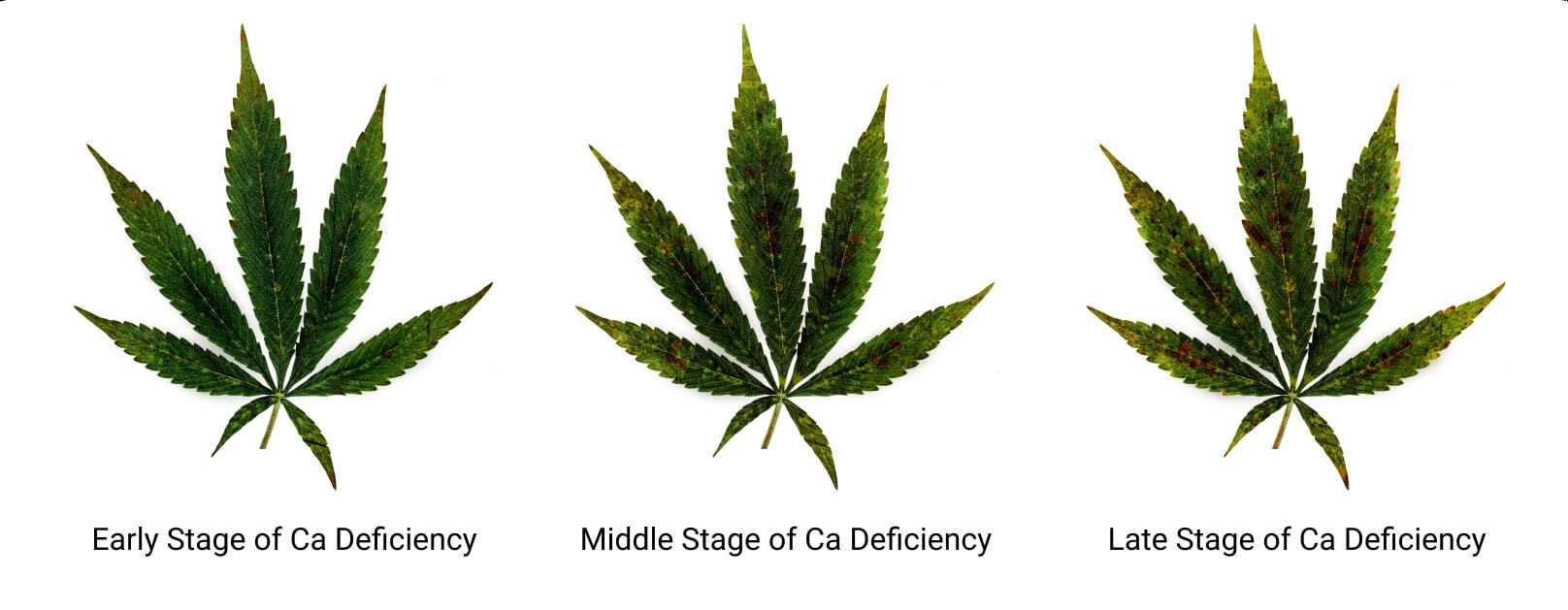
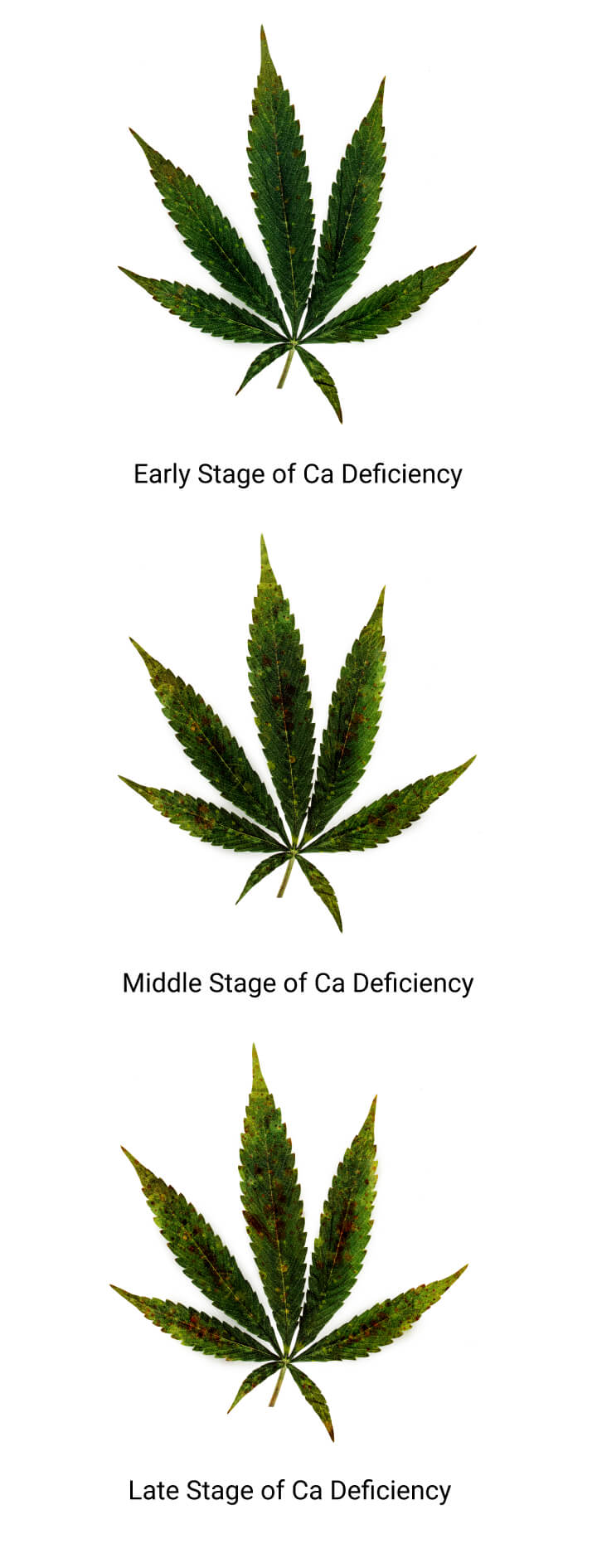
Calcium & Indoor Growing
- Soil: Avoid calcium deficiency from the outset with good soil selection. Make your own soil or buy a commercial mix with plenty of calcium for the life of the plant. If on that rare occasion a calcium deficiency is identified, there are a number of ways to rectify the problem:
- Add dolomitic lime or garden lime and water in. This will also help stabilise pH in the long-term.
- Add a commercial Calcium-Magnesium solution, calcium acetate or calcium-magnesium acetate for a rapid calcium boost.
- Add liquid calcium, liquid lime or a teaspoon of hydrated lime dissolved in four litres of water.
Check pH after treatment to make sure it is still between 6.2 and 7.

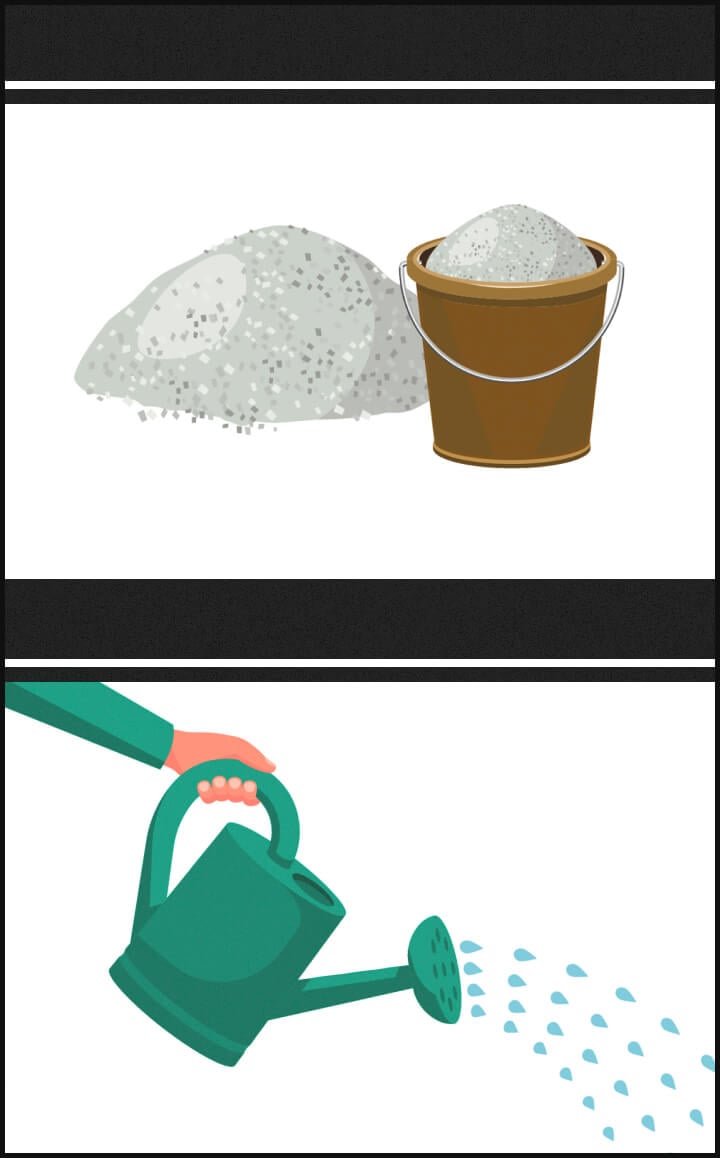
- Neutral mediums & hydro: Calcium problems are far more likely when variables in nutrients and the grow environment aren't buffered by active soil. Most water contains calcium, so little is added to commercial nutrient solutions. If a deficiency develops:
- Make a mixture of one teaspoon hydrated lime to four litres of water and water in.
- Use a commercial calcium booster or liquid lime.
If your water is 150ppm (EC 0.3), then there is little risk of calcium deficiency. Using unmodified RO or distilled water can strip calcium from plants. Before making a nutrient solution, add two parts calcium to one part magnesium to the water until the PPM reading is at least 150-200 (EC 0.3-0.4).
Water is one of the most important factors when growing cannabis. Always check the water before making any decisions. Fluctuations in pH can mimic many plant deficiencies and is the primary problem where plant health is concerned. Bad pH requires flushing the plants with clean water.


























